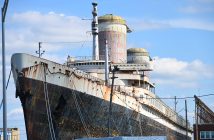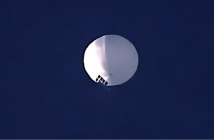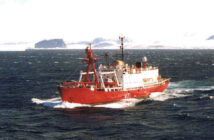Since taking office, President Donald Trump has vowed to increase spending to improve the nation’s defenses, grow the US economy and toughen security along the America’s borders.
With military spending to increase over the coming few years, it’s vital to invest in a more capable Coast Guard given the service’s key role in supporting Trump’s aims.
It’s unclear whether Trump plans to build a “big, beautiful wall” across the entire border as promised, or whether existing segments of fencing and walls would be extended. Equally unclear is how much the project will cost.
But what is clear is that if the land crossing becomes more difficult, Coast Guard Commandant Adm. Paul Zukunft has already wisely noted that those seeking entry into the United States will try to get over or under the new wall – or come to America by sea.
For decades, the Coast Guard has built a force on an acquisition budget that’s half as large as it needs to meet its global operational commitments. That pressure was only accentuated because of the 2011 Budget Control Act.
Faced with spending constraints, the Coast Guard planned for a force of 91 large, offshore, and fast response cutters. Ron O’Rourke, the naval affairs specialist at the Congressional Research Service, has noted the service calculated in 2011 that it would need 149 of these ships to fully perform its projected missions.
While the Coast Guard is getting nine instead of eight big cutters thanks to Congress, there’s a case to be made that it should increase its fleet of Offshore Patrol Cutters from 25 now planned to 49 and its Fast Response Cutters from 58 to 91. Several analysts argue it makes sense to buy three more National Security Cutters, allowing a one-for-one replacement for the service’s 12 Hamilton-class ships that are being retired.
The NSCs and FRCs are under construction, while production of OPCs is about to start. All three programs could be boosted. O’Rourke has noted that procuring these cutters with block buy or multiyear procurement contracts could reduce their procurement costs by roughly 10 percent.
That larger force may be even more necessary if relations with Mexico degrade to the point that America’s southern neighbor decides to less vigorously combat migrants and smuggling. Mexico plays a critical role in stopping people and cargo before they make it to American soil or waters, easing the Coast Guard’s job.
But that could change if tensions between Mexico City and Washington – that are already running high – worsen. Trump’s statements about Mexicans during the campaign and his pledge – on becoming president – to make Mexico pay for the new border wall, including through higher tariffs, and renegotiate the North American Free Trade Agreement have infuriated Mexicans, prompting President Enrique Peña Nieto has cancel his planned visit to Washington.
And few recognize the Coast Guard’s critical role in safeguarding the nation’s waterborne trade that amounts to $4.5 trillion annually. The service is responsible for everything from port security to safety inspections of ships to the maintenance of hundreds of thousands of aids to navigation – from buoys afloat to signs on land – that mark the
To that end, a key Coast Guard priority is modernizing the unsung multipurpose heroes of its fleet – the flotilla of inland buoy tenders, some of which are so old they have wooden deckhouses and unable to accommodate mixed-gender crews.
Farther from America’s shores, it is the Coast Guard that policies the nation’s vast maritime economic zones that include some of the world’s most abundant fisheries.
Another priority is six new heavy and medium polar icebreakers—three of each—that studies indicate would be needed to fully protect America’s interests in a melting Arctic. But the first of the new heavy icebreakers is unlikely to enter service for many years, and there is no program of record as of now for procuring the three medium polar icebreakers.
For their part, senior Coast Guard leaders welcome greater capability, but make clear that more ships and planes will mean more people, and people and operations are where the bulk of their dollars go.
They worry that a force that grows sharply larger on a short-term surge of funding will demand more sustained resources for operations, maintenance and manpower.
And they are right. The Coast Guard needs and deserves more investment on a sustained basis given its critical role in America’s security and economic prosperity.




